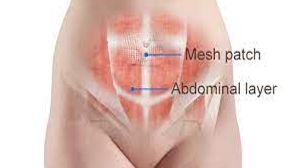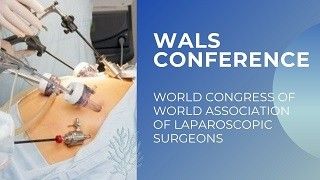How to do safe TEP Hernia Surgery
Add to
Share
297 views
Report
2 months ago
Description
1. Preoperative Considerations • Patient Selection • Avoid TEP in patients with previous major lower abdominal surgery (dense adhesions). • Bilateral inguinal hernias are excellent cases for TEP — both can be repaired through same preperitoneal space. • Treat comorbidities (diabetes, COPD) before surgery to reduce risk of recurrence and seroma. • Preparation • Bowel prep not usually required. • Prophylactic antibiotics (single shot of 3rd-gen cephalosporin). • Informed consent — discuss possibility of conversion to TAPP or open repair if peritoneal tear is large. ⸻ ? 2. Patient Positioning & Port Placement • Position: Supine, arms tucked; slight Trendelenburg (15°) helps bowel fall away. • Anaesthesia: General anaesthesia with muscle relaxation (essential for good preperitoneal working space). • Port Placement (Three Ports, Ipsilateral): • Camera Port: 10mm infraumbilical or supraumbilical (midline) — insert with open Hasson technique or Veress + balloon dissector. • Working Ports: Two 5mm ports in midline — one midway between umbilicus and pubis, one just above pubis. • Maintain strict midline port placement to avoid inferior epigastric vessel injury. ⸻ ?️ 3. Dissection & Space Creation • Balloon Dissector (if available): Safest to create space bluntly and minimize peritoneal tear. • If no balloon, perform careful blunt dissection with telescope tip under vision. • Identify: Cooper’s ligament, inferior epigastric vessels, pubic symphysis, vas deferens, gonadal vessels. • Dissect sac: • Direct Hernia: Reduce sac and clear preperitoneal fat completely. • Indirect Hernia: Carefully mobilize sac away from cord structures; avoid injury to vas or testicular vessels. • Ensure triangle of doom (iliac vessels) and triangle of pain (lateral femoral cutaneous & genitofemoral nerves) are respected — dissection here should be atraumatic. ⸻ ? 4. Mesh Placement • Use polypropylene lightweight mesh 15 × 12 cm (large enough to cover myopectineal orifice). • Position mesh to cover: • Direct space • Indirect space • Femoral canal • Obturator canal • Mesh should lie flat without folds. • Fixation: • Usually no fixation needed if space is large and mesh is stable. • If fixation needed (large direct defect): fix with tacks or fibrin glue only to Cooper’s ligament and anterior abdominal wall — avoid lateral fixation to prevent nerve entrapment. ⸻ ? 5. Desufflation & Closure • Desufflate CO₂ slowly under vision to allow mesh to spread and lie flat. • Close 10 mm port fascia to avoid port-site hernia. • Skin closure with absorbable suture or skin glue. ⸻ ⚠️ 6. Key Safety Tips (Pearls) • Stay in preperitoneal plane — avoid entering peritoneum; if tear occurs, close with clip or endoloop to maintain space. • Gentle dissection — avoid thermal injury near cord structures. • Large mesh coverage — critical for preventing recurrence. • Meticulous hemostasis — even small bleeds obscure view and increase seroma risk. • Respect the triangles — do not tack lateral to deep inguinal ring. ⸻ ?️ 7. Postoperative Care • Early ambulation within 4–6 h. • Discharge same day or next morning. • Analgesics: NSAID or paracetamol. • Avoid strenuous activity and heavy lifting for 3–4 weeks.
Similar Videos






